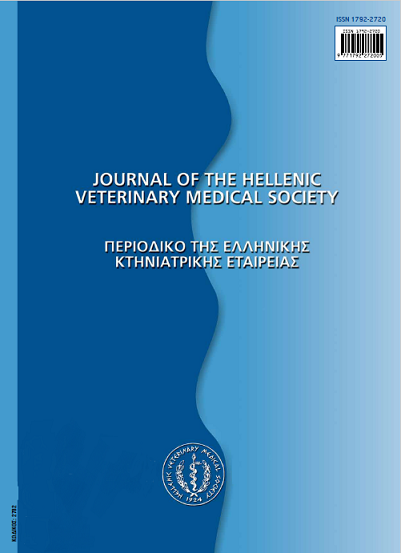Occurrence of Aflatoxins in compound feeds and feed materials for dairy livestock in Central Greece

Abstract
Aflatoxins (AFs) in feeds are considered as serious hazards for livestock health and additionally they pose a risk for consumers’ health, especially when contaminated milk is consumed. Since AFs toxicity and stability during feeds and food processing is well established, this study aimed to determine the level of AFs contamination in compound feeds, feed materials and silage, intended for feeding dairy livestock, in central Greece. Out of 274 feed samples analyzed with Enzyme Linked Immunosorbent Assay (ELISA), in 132 (48.17%) AFs were not detected, while 39 (14.23%) were found above the EU maximum tolerable limit of 10 μg kg-1. The levels of AFs contamination ranged from 0.6 to 45.2 μg kg-1. It was found more possible for corn to be contaminated (p-value<0.001). The relatively high incidence of AFs in feeds and especially in corn was verified in this study, something that is line with the view that Mediterranean countries are in high risk for AFs. As there are several factors affecting the level of AFs contamination, constant monitoring of AFs in feeds is required in order to prevent adverse effects on animals and additionally to act as a precaution measure for the occurrence of AFM1 in milk.
Article Details
- How to Cite
-
MANOURAS (Α. ΜΑΝΟΥΡΑΣ) A., & MALISSIOVA (Ε. ΜΑΛΙΣΣΙΟΒΑ) E. (2018). Occurrence of Aflatoxins in compound feeds and feed materials for dairy livestock in Central Greece. Journal of the Hellenic Veterinary Medical Society, 66(3), 169–176. https://doi.org/10.12681/jhvms.15860
- Issue
- Vol. 66 No. 3 (2015)
- Section
- Research Articles

This work is licensed under a Creative Commons Attribution-NonCommercial 4.0 International License.
Authors who publish with this journal agree to the following terms:
· Authors retain copyright and grant the journal right of first publication with the work simultaneously licensed under a Creative Commons Attribution Non-Commercial License that allows others to share the work with an acknowledgement of the work's authorship and initial publication in this journal.
· Authors are able to enter into separate, additional contractual arrangements for the non-exclusive distribution of the journal's published version of the work (e.g. post it to an institutional repository or publish it in a book), with an acknowledgement of its initial publication in this journal.
· Authors are permitted and encouraged to post their work online (preferably in institutional repositories or on their website) prior to and during the submission process, as it can lead to productive exchanges, as well as earlier and greater citation of published work.


